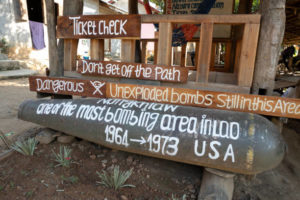
Image Credit: @picture-alliance/AP Photo
Dylan Winsick, contributing
Content Warning: Violence and Abuse
Kabul, Afghanistan – The Afghan Jirga (assembly) approved the process of releasing the last 400 Taliban prisoners in August 2020. Initially, the Jirga refused to release the prisoners, but with increased pressure from the U.S., the Jirga finally agreed to the release.
This action created a path for resolving the two-decades-old conflict between the Afghan government and the Taliban. Afghanistan’s Office of the National Security tweeted “This release is to speed up efforts for direct talks and a lasting, nationwide ceasefire.”
Peace talks are expected to start within the next two weeks in Qatar where the leaders from the Taliban have already arrived.
The U.S. -Taliban Peace Deal
This temporary deal addressed the release of 1,000 government and military personnel in exchange for the release of 5000 Taliban prisoners. The release of the Taliban prisoners was based on goodwill before the intra-Afghan negotiations — the goal of which will be devising an after-war path.
This agreement guaranteed and enforced mechanisms preventing the use of Afghan soil by any group or individual against the security of the United States and its allies. The United States government, in exchange, promised to withdraw all military forces within one year.
The agreement further laid out that a permanent ceasefire between the current Afghan government and the Taliban will be an important item on the intra-Afghan negotiation agenda. The intra-Afghan negotiation is primarily going to focus on the formation of a new post-settlement Afghan Islamic government.
In this agreement, the U.S. still does not recognize the Taliban as a state and America continues to request that the UN Security Council endorse this deal.
The Afghan Government’s Stance
Spokesperson to The President of Afghanistan, Sediq Sediqqi, in a detailed interview with The Current Affairs Times, mentioned that his government’s primary goal of restoring peace is the reason behind the prisoner release. According to Sediqqi, the Afghan government believes that the Taliban is committed to the peace process.
Sediqqi confirmed that 3,500 Afghans attended the recent council meeting requesting peace a few weeks ago. In the upcoming talks, the government will relay the importance of the people’s demands to the Taliban. These talks are to ensure that the gains of the past are preserved and that there will be no setbacks to peace. The government does not want to go back to “the dark times before 2001.”
According to Sediqqi, the Afghan people are looking to preserve the current constitution and retain its amendment-based process. All amendments will be need-based and there will not be any deviation in that process. The government does not think that the Afghan people will accept the demands of the Taliban regarding any change in the Constitution of Afghanistan. While the government is open to feedback from the Taliban about any amendments to the current constitution, they have not received any from them at this time.
When asked about what the post-settlement Afghan government will look like, Sediqqi claimed that the one clear, unambiguous thing is the demand for peace and a political settlement. However, he feels that some Taliban members “may jeopardize the Afghan society.”
Sediqqi said that Afghan people made many sacrifices to preserve what they have now, confirming that the “people will not accept any changes in the defense and security institutions as those reflect on the values of Afghan society, but, the government will evaluate what the cost of obtaining peace will be.”
Hamon Sozan, head of media relations for Afghan President Ashraf, told the Current Affairs Times that the Afghan government “definitely supports this peace process at the moment.” According to Sozan, while the administrative process can be slow, they are working hard to expedite the peace process in Qatar.
Is Peace in Afghanistan Likely?
The Current Affairs Times interviewed Professor Rohan Gunaratna, the former principal investigator of the United Nations Terrorism Prevention Unit, and a leading political analyst. Gunaratna said that the Taliban is only using this peace process to return to power and unless an investment is made on rehabilitating its leaders, nothing will change.
Given that the Taliban harbors Al-Qaeda, regaining power will only expand Al-Qaeda’s network. Rohan confirmed interviewing Taliban members in front of Afghanistan’s former president, Hamid Karzai. Based on his experience, Gunaratna believes that the Taliban needs to be converted into a democratic entity for the peace process to prevail — otherwise, the bloodshed will not stop.
Afghanistan has seen a tremendous increase in violence after the Taliban regained authority. More than 3,400 civilians have been killed since this deal was signed. Is this the start of another violent era or will peace prevail?
Image Credit: @picture-alliance/AP Photo
Sources:
- The Current Affairs Times exclusively interviewed The Spokesperson To The President of Afghanistan, Sediq Sediqqi, and The head of their Media Relations, Hamed Sozan.
- The Current Affairs Times has a copy of The US Taliban Peace Agreement.
- The Current Affairs Times exclusively interviewed Political Analyst Rohan Gunaratna
- “Taliban prisoner release: Afghan government begins setting free last 400”
- “Afghanistan government halts prisoner release, delaying talks with Taliban”
- “As Afghanistan struggles to start peace talks, violence fills the void”
Afia is a lawyer, journalist, an avid traveler, an avid reader, a foodie, and an amateur singer. She enjoys instrumental music with her glass of wine ?






